When the Resolution Island Stoat Eradication Programme began in Dusky Sound, Fiordland in 2008 no-one said it would be easy and, 12 years later there are still stoats on Resolution. But Department of Conservation biodiversity ranger, Peter McMurtrie, won’t be giving up any time soon.
“There are two issues, Pete explains. “Firstly, there are some stoats on the island that will just never go near a trap. Secondly, stoat immigration – where they swim to the island from nearby locations, is also playing a part. Back in the early 2000s, studies showed stoats infrequently swam 500m. Now we know they’re capable of swimming for two hours and covering several kilometres.”
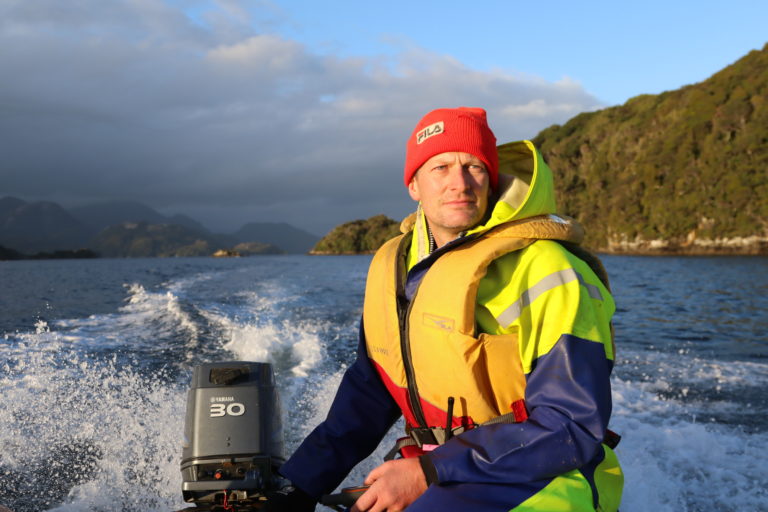
Pete has been working on the project since its inception, along with a parallel project on Secretary Island (Doubtful Sound) that began in 2005.
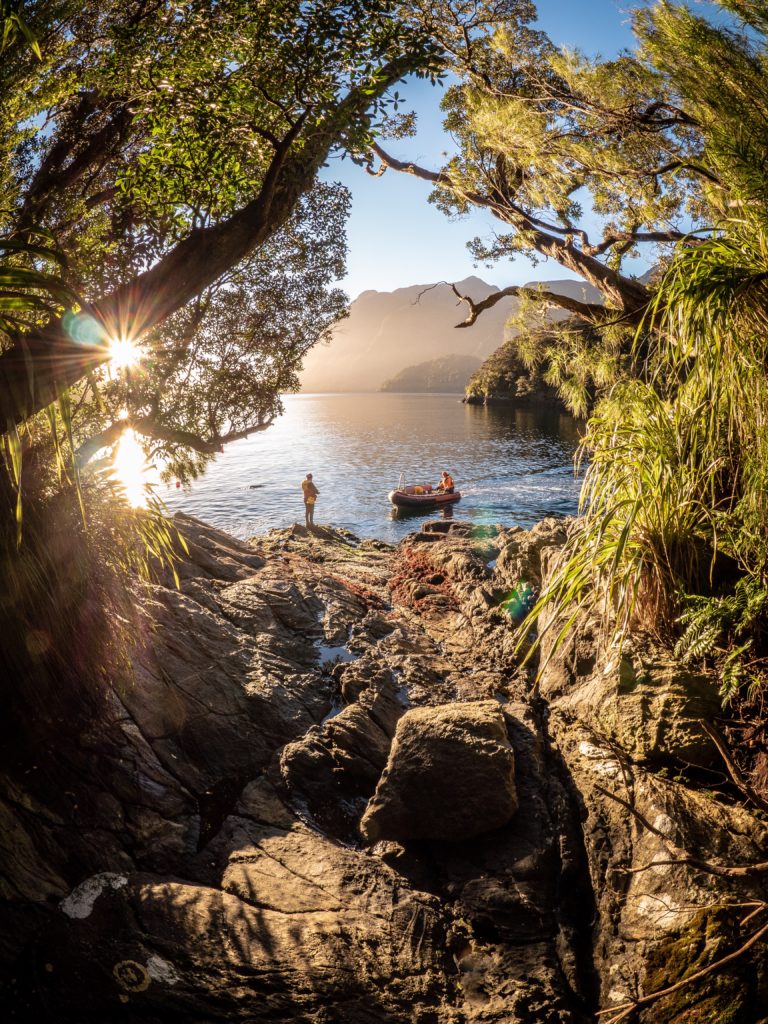
“It’s the biggest landscape scale project to get rid of stoats and information we’ve learned along the way is now feeding into more recent stoat eradication projects such as D’Urville Island, Kapiti and Waiheke,” he says. “We’ve trialled different types of traps baits, and lures – like stoat scent lures.”
So why Mauikatau/Resolution Island?
“There are no rats on Resolution Island – which is a big plus – and no rodents at all on Secretary. The original campaign was to get the deer and stoats off both Secretary and Resolution. We’ve got the deer off Secretary, but we’re still plugging away at the stoats.”
Resolution is the largest island in the Fiordland region, covering a total of 208 square kilometres. It is New Zealand’s seventh largest island, and the second largest uninhabited island. Roughly rectangular in shape, it has a long narrow peninsula on the west coast known as Five Fingers Peninsula.
Stoats crossing from the mainland has been an issue historically, sabotaging one of New Zealand’s earliest conservation efforts. In 1894 the Department of Lands and Survey appointed Richard Henry as curator of Resolution Island, which was stocked with species such as kakapo and kiwi that were threatened by mustelids on the mainland. This early conservation attempt failed when stoats reached the island in 1900.
It’s still an issue.
“There’s been a recent outbreak of stoats on Resolution, following an explosion of mouse numbers due to the beech mast and possibly other plant species masting too,” Pete says. “All the female stoats have been breeding at capacity, having 10-12 young and there have been 200 stoats caught this year, compared to the usual 30 or 40.”
Research by Andrew Veale has provided some interesting insights into the origins of the stoats.
“The genetic material and age of the stoats showed that a male stoat had survived on Secretary Island even after a whole lot of knockdown years,” says Pete. “We got all the island females, but then other females came out to the island and the male partnered with those female immigrants, starting a new population. The old male was eventually trapped, however.”
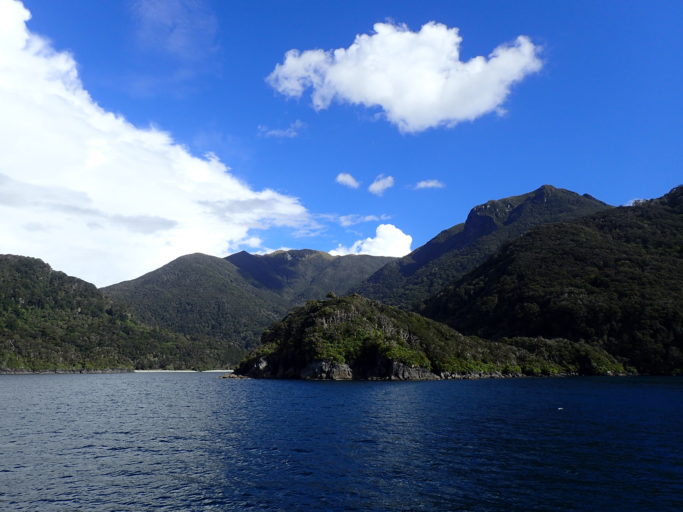
The Resolution Island eradication project was begun with ‘old school’ stoat trapping methods, Pete explains.
“There was an upscaling of the basic methods used earlier on Chalky Island and Anchor Island,” he says, “ramping them up for the bigger island.”
Step 1 at the start of the campaign was to make sure there was good biosecurity so that rats didn’t get established on the islands.
“Rats have arrived, but luckily they were caught in the stoat trapping network, even though the traps were sparsely spaced to suit a stoat’s home range,” says Pete. “There were 2 female ship rats caught on Secretary Island and 3 rats were caught on a neighbouring island just 80 metres away from Secretary Island on two separate occasions. On Resolution Island there have been 5 rats caught since the start of the project – 3 of them recently.”
Step 2 was to target the deer and stoats.
“The genetic evidence was that the deer were very closely related, so that Secretary Island was probably populated by one event,” Pete says.
The deer have been eradicated from Secretary Island – thanks in large part to the skills of deer expert Norm McDonald. DNA from deer pellets was used to understand what individuals were remaining and team hunting methods using a helicopter and hunter with groups of dogs were used to eradicate them.
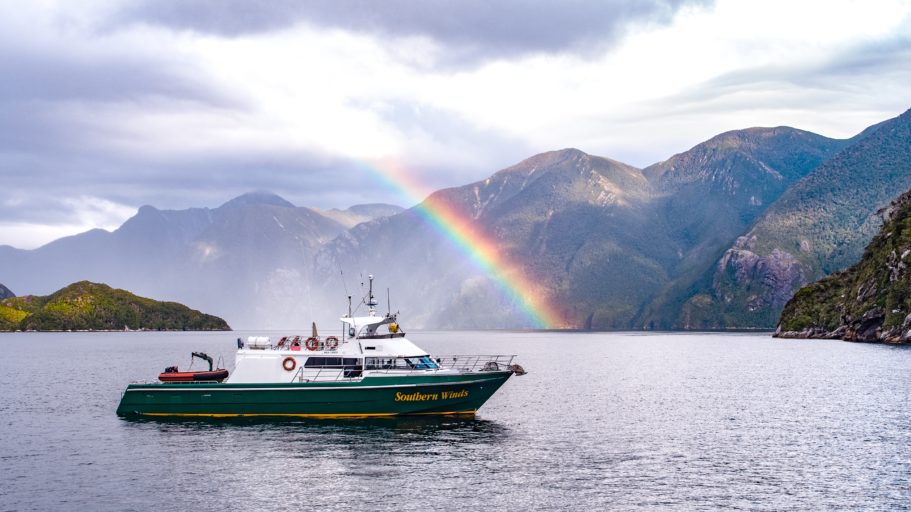
“Hopefully they won’t swim back,” says Pete, who believes its unlikely to happen unless high population pressure is allowed to build up on the mainland.
The battle to eradicate stoats continues.
“Since about 2013 we’ve been trying different baiting regimes on Secretary Island,” says Pete, “and we’ve also tried an extra trapping round. On Resolution Island the focus is on stopping stoat immigration. Recently the mainland peninsula had an aerial 1080 drop, so seeing the effects next summer will be interesting.”
Pete is also hopeful that the ‘other guys’ might come up with something new to add to his stoat control toolbox.
“For a long time I was ploughing away by myself. Now there are many others doing stuff to target stoats around New Zealand. It’s fantastic!”
One of the issues for Pete is the remoteness of the areas he’s working in.
“It’s expensive to trial new techniques in Fiordland. It’s too far away. Other islands are closer to communication devices and the technical advice is that new technology should be trialled somewhere else first to get backing for the theory. Then we can apply it to Fiordland.”
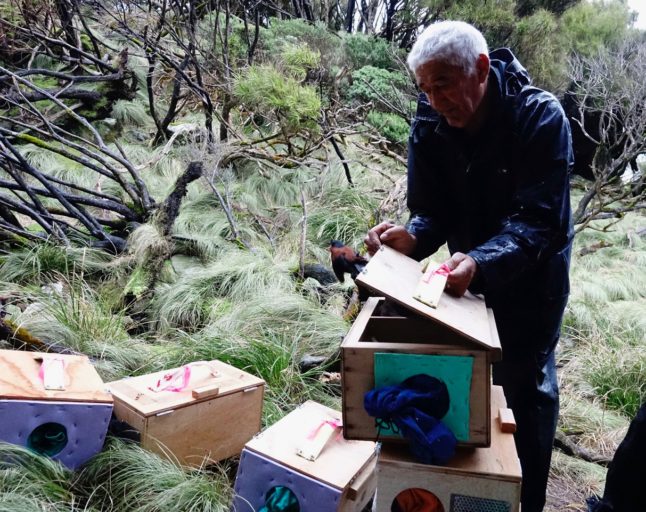
Pete has, however, been able to introduce another trap type to Resolution Island’s arsenal.
“We used DOC 150 traps previously, but we’ve now added A24 resettable traps and we’ve also increased the density of traps, adding in new traplines between the original lines,” he explains. “There was originally 1 trap per 9 hectares and now its 1 per 6 hectares. Other programmes have a higher trap density still. In future we may also trialled some PAPP bait stations.”
The stoat eradication campaign is viewed by some as a failure – since stoats haven’t yet been eradicated – but Pete disagrees.
“It’s not a failure ecologically,” he points out. “There have been increases of species already present on both islands, namely kākā, kea, kiwi and Fiordland skinks and also good numbers of native land snail Powelliphanta fiordlandica on Resolution. There has been an increase in invertebrates on the islands and introductions of threatened species.”
“Rock wrens have been reintroduced to Secretary Island (it’s our most suitable offshore island able to provide their preferred harsh alpine habitat). They’ve increased in numbers and in range. Kōkako, mohua and South Island robins have also been released and mohua and tīeke/saddlebacks have been successfully reintroduced to Resolution. They’re both considered indicator species,” Pete points out, “as they’re vulnerable to stoat predation.”
Check out a videoclip promoting ‘Pest Free’, a film by Braydon Maloney which features the restoration work being carried out on Resolution and Secretary Islands.

